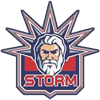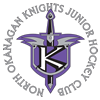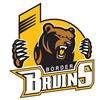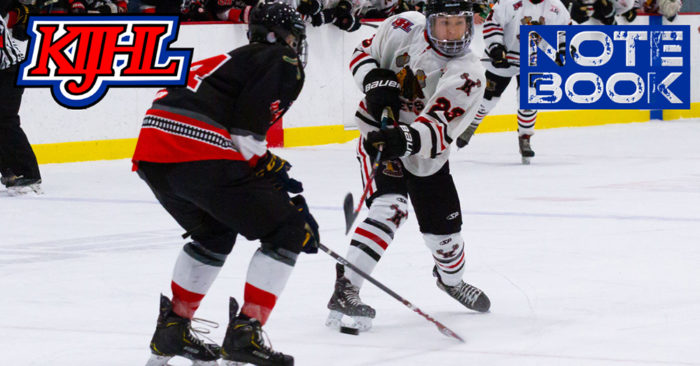This edition of the KIJHL Notebook puts three coaches in the league under the spotlight. They shed light on how they got into coaching and the people who have been influential for them or have made big impacts into how they do their job.
 Still having a passion for hockey after retiring from an eight-year pro career, Kamloops Storm head coach Steve Gainey got into coaching. He took a few years off after having kids, but returned as he enjoys being at the rink.
Still having a passion for hockey after retiring from an eight-year pro career, Kamloops Storm head coach Steve Gainey got into coaching. He took a few years off after having kids, but returned as he enjoys being at the rink.
Gainey grew up at the rink as his father Bob played in the NHL and won five Stanley Cups with the Montreal Canadiens.
“I’ve been around the game in a lot of different facets over the years,” says Gainey, who also scouted for the Anaheim Mighty Ducks when Brian Burke was the general manager. “The management side of the game is entertaining to me just as much as the playing side has been.”
Prior to getting involved with the Storm, Gainey started coaching at the major midget level for a season. He then got involved as an assistant coach with the Thompson Rivers University WolfPack in the B.C. Intercollegiate Hockey League and served in the same role with the WHL’s Kamloops Blazers, who he played for four seasons.
Marc Habscheid was his coach his final two years in Kamloops and was influential for the Montreal native, drafted by the Dallas Stars.
“My junior years were really good years as far as the camaraderie. We had some winning seasons.”
Habscheid pushed Gainey and his teammates to be their best and it wasn’t always easy.
“There were some really challenging times where he would really challenge the individual player to move outside of their comfort zone. I would go over to his house to go over certain videos of my effort on certain plays versus other plays,” says Gainey. “He was able to shine a light on areas where maybe you weren’t putting everything in.”
Gainey adds Habscheid’s attention to detail within preparation for games and a playoff series was really high compared to what he had seen up to that point. The Blazers enjoyed two lengthy unbeaten streaks of 26 and 19 games under Habschied. They lost in the WHL Final in 1998-99.
“(Habscheid) His NHL experience, he knew the game and understood the game well,” says Gainey, adding his own playing experience, the knowledge he has helps with coaching.
Gainey played 33 NHL games, 13 with the Stars and 20 with the Phoenix Coyotes when Wayne Gretzky was the head coach.
“Wayne was very easy to get along with,” says Gainey, who played 13 games with the Stars. “I was able to connect with him and thought that was really nice the way he is a very personable coach like that. I think he really cared about his players a lot and the teams. I enjoyed those qualities he brought to the game.”
The door to coaching in the KIJHL opened for Gainey through former Storm and WolfPack player Jassi Sangha. They built a strong friendship that led to Sangha asking Gainey to join him on the Storm’s staff – that was three years ago.
“Coaching is great. Coming to the rink is such an enjoyable thing for guys that love the game the way so many of us do. Being here in a lot of different facets is really an enjoyable experience,” says Gainey, 42 who enjoys watching video and practices and figuring out the analytics of the game. “I feel like I’m learning everyday. I’m getting to be a better coach and understanding the game more than I did even as a player.”
 A year after retiring from an NHL career playing 996 regular season games with nine organizations, North Okanagan Knights coach Dean McAmmond was approached by friend and former NHLer Sandy Moger to help out with minor hockey. McAmmond agreed and that led to coaching in the Vernon Minor Hockey Association for six years. He two a two-year break and then was approached about helping out with the Knights.
A year after retiring from an NHL career playing 996 regular season games with nine organizations, North Okanagan Knights coach Dean McAmmond was approached by friend and former NHLer Sandy Moger to help out with minor hockey. McAmmond agreed and that led to coaching in the Vernon Minor Hockey Association for six years. He two a two-year break and then was approached about helping out with the Knights.
McAmmond joined John Van Horlick, who he admires because of the junior hockey legend he is, then would take over as coach.
The most influential coach in McAmmond’s NHL career was Darryl Sutter. Sutter was part of Mike Keenan’s Chicago Blackhawks coaching staff when McAmmond broke into the league as an 18-year-old. Sutter would become McAmmond’s head coach when the two were reunited in Calgary and McAmmond says the Viking, Alta., native knew exactly how he wanted the team to play.
“He was very much a general in that way. He got everybody on the same page,” says McAmmond, who had two stints with the Flames (2001-02, and 03-04). “He was consistent and I could respect him because he held everyone accountable. He didn’t favour Iggy (Jarome Iginla) or Connie (Craig Conroy) or any of the super stars. He was very straightforward and honest.”
McAmmond, a father of four, has adopted some of the things Sutter did and his mentality on game approach.
“I can still see him rocking back and forth in a stall and just looking at us – glaring at us in the room,” says McAmmond, who grew up in Grande Cache, Alta. “He would look and say you guys aren’t ready. You guys aren’t ready! I’m thinking, what, ‘I’m getting my shin pads on, I’m getting my shoulder pads on. How can I not be ready?’ It was just a sense, he could tell. He had a feel in the room and could see if the guys were focused or if they were loose. He had a good read for every individual and would call it out right. I respected the fact that he went after the certain things to call out what we needed as players and hold us accountable.”
McAmmond tries to take the same approach with the Knights and remembers his first year on the bench.
“I went into the dressing room and I was like, man, you guys aren’t ready. I’m thinking here’s Darryl standing here looking at these guys. It’s different right? They are 16-20. I ask them, are you guys ready? They all pipe up, Yeah! We’re ready! And I’m walking out of the room and thinking, you guys aren’t even close to being ready. It’s just a sense that I could tell they’re not ready. They go out for warm up and we start the game, and we’re so not ready. How do you get these guys ready?”
As for his coaching future, McAmmond isn’t sure what’s ahead. He’s only certain that he isn’t interested in leaving the area to coach at higher levels.
 John Clewlow’s father planted the seed for him to eventually coach. Clewlow’s father died when he was 16 and Clewlow followed hockey wherever it took him. Getting into coaching kicked when he retired from the Southern Professional Hockey League in 2016-17. Clewlow says getting that position would be the tricky part.
John Clewlow’s father planted the seed for him to eventually coach. Clewlow’s father died when he was 16 and Clewlow followed hockey wherever it took him. Getting into coaching kicked when he retired from the Southern Professional Hockey League in 2016-17. Clewlow says getting that position would be the tricky part.
Becoming the coach-GM of the Grand Forks Border Bruins happened with the help of the person who held the position before him – Emery Olauson. Clewlow played for Olauson, who coached the Fayetteville FireAntz in the SPHL, from 2013-15. Olauson reached out to Clewlow and got him on the interview list for the Border Bruins.
While it has only been three seasons in the position, Clewlow says they have been amazing.
“There is so much to learn every single day, during the season as well as the offseason. I’ll add that it’s a lot more stressful coaching than it is playing,” says Clewlow, of Brampton, Ont. “There is no better feeling than trying to help guide and give life experience to the players that come into town. Seeing them grow as players and as humans hits a different way.”
Two people that had an impact on Clewlow as a player and now as coach are Mark Desantis and Aaron Saul. Desantis coached Clewlow at the start of his semi-pro career. And as Clewlow puts it, from the details to the knowledge of the game, he had it all.
“He understood what it was like to be a player and knew how to get the best out of us every night,” says Clewlow.
Saul was Clewlow’s coach at Elmira College and is where the Border Bruins coach-GM gained his understanding of how to act as a player in the rink, as well as away from it.
“A lot of life lessons learned from my time playing for Sauly,” says Clewlow. “I think my playing experience allows me to understand certain aspects of the game. But ultimately, learning from coaches that have been doing this for a long time and doing it well, is the best way to find the edge needed.”


























